Embibe Experts Solutions for Chapter: Wave Optics, Exercise 1: Exercise-1
Embibe Experts Physics Solutions for Exercise - Embibe Experts Solutions for Chapter: Wave Optics, Exercise 1: Exercise-1
Attempt the free practice questions on Chapter 31: Wave Optics, Exercise 1: Exercise-1 with hints and solutions to strengthen your understanding. Beta Question Bank for Engineering: Physics solutions are prepared by Experienced Embibe Experts.
Questions from Embibe Experts Solutions for Chapter: Wave Optics, Exercise 1: Exercise-1 with Hints & Solutions
In Young's double slit experiment, one of the slits is so painted that intensity of light emitted from it is half of that of the light emitted from other slit. Then
In YDSE, the source placed symmetrically with respect to the slit is now moved parallel to the plane of the slits it is closer to the upper slit, as shown. Then,
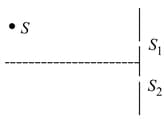
In a YDSE experiment if a slab whose refractive index can be varied is placed in front of one of the slits then the variation of resultant intensity at mid-point of screen with will be best represented by [Assume slits of equal width and there is no absorption by slab]
A ray of light is incident on a thin film. As shown in figure are two reflected rays and are two transmitted rays, Rays and undergo a phase change of Correct ordering of the refracting indices is :
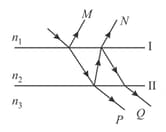
Two point sources separated by emit light of wavelength in phase. A circular wire of radius is placed around the source as shown in figure.
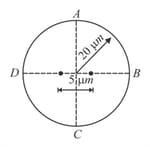
Two coherent narrow slits emitting light of wavelength in the same phase are placed parallel to each other at a small separation of The light is collected on a screen which is placed at a distance from the slits. The smallest distance such that the is a maxima.
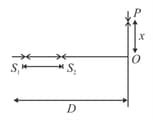
In the YDSE shown the two slits are covered with thin sheets having thickness and refractive index and Find the position of central maxima
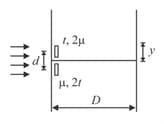
Light of wavelength is incident normally upon a glass plate. The glass plate rests on top of a second plate so that they touch at one end and are separated by at the other end as shown in the figure.

Which range of values contains the horizontal separation between adjacent bright fringes?
